Choosing which plants to bring to your backyard can be a tough decision indeed. Especially when you have a spacious lawn to cover, it is easy to get stuck dreaming instead of digging. However, for any homesteader, it’s wise to choose trees that give back year after year.
In today’s guide, I’ll share with you six practical, rewarding trees that bring food, fuel, and resilience to your homestead for generations to come. So let’s uncover them one by one.
1. Apple Tree
If you can only plant one fruit tree, make it apple. These trees have earned their place on homesteads for generations, and for good reason. A single semi-dwarf tree can yield over 200 pounds of fruit in a good year, enough for fresh eating, pies, applesauce, cider, and even vinegar.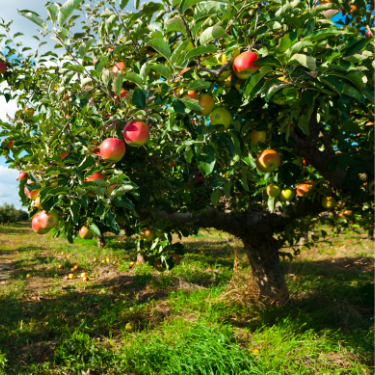
You don’t need a massive orchard to make it worthwhile either. With careful pruning and proper spacing, even a small backyard can support two or three varieties, helpful for cross-pollination and extending your harvest window. Early varieties like ‘Liberty’ or ‘Yellow Transparent’ ripen in midsummer, while later ones like ‘Arkansas Black’ can store for months in a root cellar.
Apples also press beautifully into juice and hard cider, and the leftover pulp can be fed to livestock or composted. And don’t overlook the wood. It’s dense and slow-burning, so it makes an excellent smoking fuel or firewood.
Once established, these trees can produce for decades with minimal input. Just be sure to select disease-resistant varieties suited to your climate, and consider planting a few daffodils or garlic bulbs at the base, as they help repel pests like borers and deer. For smaller pests, there are some old-school Amish tricks I found that work wonders. They involve scraps and things you already have around your homestead, like wood ash or forks, and they are surprisingly effective. I first learned about them from the Amish Ways book. Honestly, I wish more people knew about them; they’re a game-changer for any homesteader.
While your apple trees provide delicious fruit and useful wood, they can also serve as a host for another valuable resource: usnea, or Old Man’s Beard. This lichen grows naturally on mature trees with rough bark, including apples, especially in areas with clean air and partial shade.
Usnea, also known as “Nature’s Doxycycline”, is one of the most powerful natural antibiotics you can find in the wild. It’s loaded with usnic acid, a potent compound that kills harmful bacteria—including drug-resistant strains like MRSA. But it doesn’t stop there. Usnea is also antifungal and antiviral, making it an all-around defender for wound healing, immune support, and even respiratory health.
The good thing is you can make your own tincture or many Usnea-based recipes from scratch. I found many alternatives to OTC meds like Nature’s Amoxicillin, Nature’s Doxycycline, and many others here.
You can encourage its growth by gently attaching small usnea clumps collected from healthy sources onto the branches of your apple trees. Just make sure to avoid overharvesting wild usnea, as it grows slowly and needs time to reestablish.
No Time to Forage? Here’s the Easiest Option
Or maybe you don’t have the time to go out looking for Usnea—or to wait weeks for it to grow so you can make your remedies. That’s why I always keep a bottle of ready-made Usnea Tincture on hand. It’s the simplest way to get all of Usnea’s antibacterial and immune-supporting benefits without the hassle of foraging and preparing it yourself.
It gives you all the powerful antibacterial and immune-supporting benefits of Usnea, without the wait. Just a few drops, and you’re good to go.
I finally found a trustworthy source who forages organic Usnea herself—perfect for those of us who are busy and just want the ready-made benefits on hand. Here’s the link where I got it from.
2. Pine Tree
Don’t overlook the humble pine. White pine and Ponderosa are popular for blocking strong winds and protecting your garden, orchard, or livestock.
These trees give you year-round benefits. You can make a vitamin C-rich tea from their needles. There are also tinctures made from pine that help fight viruses, like this anti-viral one. For pain relief from rheumatism or arthritis, there’s an infused pine oil you can use. Also, its sticky resin has been used for generations to make salves, natural glue, and even fire starters.
Pine needles also make excellent mulch, especially around acid-loving plants like blueberries. And if you’re heating with wood, pine splits easily and ignites fast, though it burns hot and fast, so it’s best mixed with hardwoods.
If you happen to notice pinecones on the tree, don’t just admire them! Inside are edible seeds that pack a surprising nutritional punch. These pine nuts are rich in fats, vitamins, and minerals, making them a valuable emergency food source if you ever find yourself in a pinch. You could live off them alone for days if you had to.
The only catch? They’re not that easy to extract, unless you know this little trick that makes it almost effortless. And this is just one of the many overlooked survival skills you’ll discover right here.
3. Mulberry Tree
If there’s one tree that pulls its weight without asking much in return, it’s the mulberry.
Fast-growing, drought-tolerant, and remarkably low-maintenance, this tree starts producing fruit within just a few years. Once it does, you’ll have more than enough to go around.
The berries are sweet and juicy, similar to blackberries, and they come in red, black, or white varieties. Chickens, ducks, and even pigs love them, and many homesteaders plant mulberries near the coop just to cut down on feed during fruiting season. Wild birds will try to beat you to the harvest, so be prepared or plant extra and let them have their share.
The fruit makes excellent jam, wine, and even a naturally sweet syrup. You can also dehydrate them for a long-lasting trail snack. But it’s not just the berries. Mulberry leaves are high in protein and can be used as supplemental livestock feed (especially for rabbits and goats).
With strong limbs, fast canopy growth, and deep roots, mulberries also work well as shade trees, erosion control, or a living privacy screen. Just be mindful of where you plant them. Ripe fruit can stain sidewalks and patios, so they’re better suited to the edge of a pasture or garden.
4. Dwarf Peach Tree
If you love fresh stone fruit but have limited space, the dwarf peach tree is a fantastic choice.

These compact trees typically grow just 6 to 10 feet tall, making them perfect for small yards, patios, or even large containers.
Despite their size, dwarf peaches produce full-sized, juicy fruits packed with sweet-tart flavor. You can enjoy them fresh, canned, baked into desserts, or even dried for long-term storage. The trees bloom with beautiful pink flowers in early spring, adding an ornamental touch to your homestead.
Dwarf peach trees are relatively easy to care for. They need full sun, well-drained soil, and regular watering during dry spells. Pruning is essential to keep them healthy and productive, but with the smaller size, it’s less of a chore than with standard peach trees.
Medicinally, peaches have been used in traditional remedies for digestive health and skin conditions, and the flowers are sometimes infused in teas for their calming effects.
5. Elderberry Tree
If you’re growing your own remedies, elderberry should be near the top of your list. More of a large shrub than a tree, elderberry can easily be pruned into a small multi-stemmed tree shape. Once established, it’s tough, fast-growing, and loaded with health benefits.
The dark purple berries are rich in antioxidants and have been used for centuries to make syrups, teas, and tinctures that support the immune system. Come cold and flu season, there’s nothing quite like a homemade elderberry syrup to have on hand. The flowers are just as valuable. They’re often steeped into calming teas for fever, sinus pressure, and even allergies.
Elderberries are also a great choice for wildlife-friendly homesteads. The blossoms attract pollinators in early summer, and the fruit feeds birds well into fall. Just keep in mind: raw berries, stems, and leaves contain compounds that can cause digestive upset, so they should always be cooked before use.
These shrubs thrive in moist soil and can tolerate partial shade, making them perfect for wetter areas of your property where other fruit trees might struggle. If space allows, plant two or more for better cross-pollination and a heavier yield. ‘York’ and ‘Adams’ are common cultivated varieties that pair well together and produce large, easy-to-harvest clusters.
Once your elderberries are ripe, there’s no shortage of ways to put them to good use. You can make your own elderberry syrup for immune support, especially during cold and flu season. Elderberries can also be turned into vitamin bars, tinctures, cough drops, oxymels (a mix of vinegar and honey), and even infused into herbal wines or gummies. If you prefer drying them, they store well and can be used later in teas and homemade capsules. Just remember to always cook the berries before using them. They’re powerful, but not meant to be eaten raw.
So how do you do it?
For starters, you’ll usually have to wait a couple of years before your shrubs are mature enough to flower and fruit. Then, you’ve got to harvest at just the right time (ripe but not overripe), remove all the stems, and cook them properly. And if you’re making a tincture, you’ll need at least a six-week wait for it to fully infuse. And even then, it only works well if you get the ratios and alcohol content right.
That’s why I keep this ready-made elderberry tincture on hand instead. Tinctures are one of the most potent ways to take herbal remedies, and this one comes from the most trustworthy small-batch maker I’ve found online. It’s all organic, hand-harvested, and surprisingly affordable.
6. Witch Hazel
Witch hazel is one of those quiet workhorses of a homestead: low-maintenance, beautiful, and deeply medicinal.
Though often treated as a large shrub, it can be pruned into a graceful small tree, typically topping out around 10 to 15 feet. If you’re short on space, this one’s a strong contender.
The bark and twigs are the source of the well-known astringent used for soothing skin irritations, reducing swelling, calming insect bites, and treating minor cuts and bruises. It’s also useful for varicose veins, hemorrhoids, and even as a natural toner in skincare routines. Traditionally, the extract is made by steeping or distilling the bark and twigs, often with alcohol.
But witch hazel isn’t just medicinal. It’s also a visual standout. In late fall or early winter, when most trees have gone bare, witch hazel bursts into unusual yellow, ribbon-like blooms that cling to its branches through frost and snow. It adds life to the landscape just when everything else is fading.
This tree does best in partial shade to full sun and prefers well-drained soil, though it’s fairly adaptable once established. It’s also deer-resistant and tolerant of most pests, so it’s easy to manage even in less-than-ideal conditions.
>> The Most Powerful Painkiller That We Lost to History (You Can Find It In Your Backyard)
7. Neem Tree
If you’re looking to grow your own medicine (and natural pest control) in one compact package, the neem tree is hard to beat.
Native to India and widely used in Ayurvedic medicine, neem is often called the “village pharmacy” for good reason. Just about every part of the tree has a use, from skin care to garden defense.
In tropical and subtropical climates, neem can grow into a full-sized tree (30–40 feet), but it also adapts surprisingly well to container growing. That means even homesteaders in cooler zones can grow it, so long as you bring it indoors before the first frost. In a pot, regular pruning keeps it small and manageable, often under 6 feet.
The bitter leaves are antifungal, antibacterial, and traditionally used in teas or salves for skin rashes, infections, and detox. Neem oil, pressed from the seeds, is one of the best natural insect repellents around. It can be used in the garden to deter aphids, mites, and caterpillars or mixed into homemade soaps and creams to soothe irritated skin. Even the twigs are useful; they’ve been used for centuries as natural toothbrushes, thanks to their antimicrobial properties.
Neem prefers full sun, well-drained soil, and minimal watering. It thrives on neglect and doesn’t need much feeding, making it ideal for low-input homesteads. In winter, it may drop leaves when kept indoors, but it bounces back quickly once returned to warmth and light in spring.
9. Redbud Tree
For a splash of color and a dash of edible flair, the redbud tree is a true backyard gem.
Native to much of North America, it’s a small, graceful tree, usually topping out around 15 to 20 feet. Perfect for smaller yards or as a focal point in a mixed garden.
In early spring, before the leaves fully open, redbud bursts into vibrant pink to magenta blossoms that not only brighten the landscape, but are also edible. These flowers add a subtle, slightly tangy flavor to salads, stir-fries, or even pickled for a unique treat.
Beyond its beauty and culinary uses, parts of the redbud have traditional medicinal value. Folk remedies have used the bark and roots in teas to help soothe coughs and ease cold symptoms. Redbud is also an early nectar source for bees and pollinators, helping support your garden’s overall health.
Redbud thrives in full sun to partial shade and prefers well-drained soil, making it fairly easy to grow. It’s also drought-tolerant once established, which means less fuss for you during dry spells.
10. Fig Tree
If you’re in a warmer zone or have space for a large container, you can add a fig tree to your backyard. These Mediterranean natives are surprisingly hardy once established, and certain varieties like ‘Chicago Hardy’ can even bounce back after freezing to the ground in colder climates.
Figs are one of the few fruits that don’t ripen well off the tree, which means store-bought ones are often bland and underripe. Growing your own changes everything. The fruit is rich, sweet, and loaded with fiber, calcium, and antioxidants. It can be eaten fresh, dried, or turned into preserves and chutneys.
Best of all, fig trees don’t demand much attention. They’re naturally pest-resistant, rarely bothered by deer, and grow well in poor soil. A sunny spot and a bit of pruning is usually all they need. In colder zones, they can be grown in pots and overwintered in a garage or basement.
Their broad leaves provide good shade, and the tree’s compact size, typically 10 to 15 feet, makes it ideal for small yards or urban homesteads. Just be sure to water consistently during fruiting season, as dry spells can cause figs to drop prematurely. With a little care, you’ll be rewarded with two crops per year in warmer regions, making them one of the most productive small trees you can grow.
11. Tree of Heaven
The Tree of Heaven (Ailanthus altissima) is often overlooked or even shunned because it’s an aggressive, fast-growing invasive species. But that hardiness and rapid growth can actually be useful if managed carefully, especially for homesteaders needing quick shade, windbreaks, or erosion control on challenging ground.
This tree thrives in poor soils and harsh conditions where many others struggle, making it a reliable option when you want greenery fast. It also has a history in traditional medicine, particularly in Chinese herbal practices, where the bark and roots have been used for their anti-inflammatory and antimicrobial properties.
However, the Tree of Heaven does come with downsides. It spreads aggressively through suckers and seeds, can outcompete native plants, and releases chemicals that inhibit growth around it. For that reason, many gardeners avoid planting it directly in the ground.
But here’s the good news: you can actually grow it in containers! This limits its root spread and helps control its invasiveness. In a large pot, with regular pruning and care, it can provide fast-growing cover without taking over your homestead. It prefers full sun and well-drained soil, so placing it where it can get plenty of light is key.
It has spread widely across North America, so much so that city officials often launch eradication campaigns and advise people to cut it down. But that’s a big mistake. Every part of this tree can be turned into powerful medicine.
It’s been used for centuries especially in Chinese herbal practices, where the bark, roots, and seeds have been valued for their anti-inflammatory, antimicrobial, and other healing properties.
Click here to learn more about the medicinal uses and benefits of the Tree of Heaven, and why cutting it down might be a huge mistake.
12. Hawthorn Tree
This one’s a real hidden gem. Hawthorn doesn’t just look good. It also works hard. With its thorny branches, it makes a natural living fence that keeps critters out. But the real magic is what’s inside.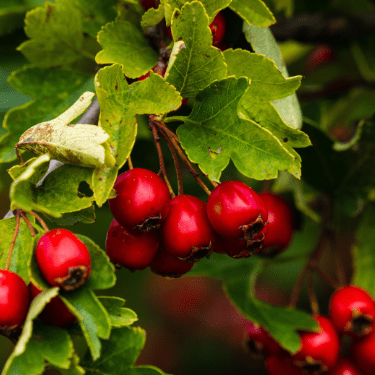
For centuries, hawthorn has been used to support heart health. The berries, leaves, and even the flowers are packed with compounds that help improve circulation, lower blood pressure, and strengthen the heart muscle. Some folks call it “nature’s heart tonic,” and for good reason.
In spring, the tree is covered in white or pink blooms that bees love. Later in the season, bright red berries appear—tart, slightly sweet, and loaded with benefits. You can turn them into tea, syrup, jelly, or even a simple tincture.
Better yet, hawthorn is tough. It handles poor soil, drought, cold winters, and deer. Once it’s in the ground, it asks for very little, but gives back a whole lot.
The tree itself is hardy and low-maintenance, thriving in poor soil, drought, and cold temperatures. It’s also deer-resistant thanks to its thorns. If you’re building a natural barrier around your garden or pasture, hawthorn’s dense structure makes it ideal for keeping out unwanted visitors.
You can steep the dried flowers and leaves into tea, or turn the berries into syrup, tincture, or even jam. They have a mild, slightly tart flavor and pair well with cinnamon or honey. Traditionally, hawthorn was also used to help with anxiety, palpitations, and even digestive issues related to stress.
The most effective way to unlock Hawthorn’s benefits is to extract its compounds into a tincture, like this “Young Heart” Elixir, and let it work steadily, drop by drop, through your bloodstream.
If you don’t have the time to do it yourself, I recommend this Hawthorn-based tincture made by one of the most trusted herbal retailers online. The herbs are wild-harvested and combined with heart-supporting plants like Tulsi, Fenugreek, and Bilberry, all chosen to strengthen circulation, regulate cholesterol, and help the heart beat with less strain.
Final Words
At the end of the day, planting these trees isn’t just about filling empty space. It’s about building something that lasts, feeds you, shelters you, and gives back to the land that supports you. So take your time, pick the ones that fit your homestead’s needs best, and plant them with care.
Happy gardening!
DIY Tools You Can Make from Bark, Rocks and Trees
Whatever You Do, Don’t Chop Down This Backyard Tree (Video)
How To Tell A Dead Tree From A Healthy One


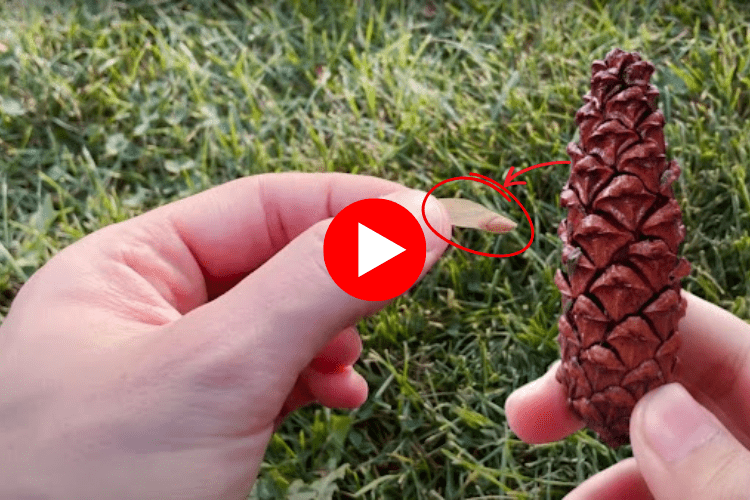




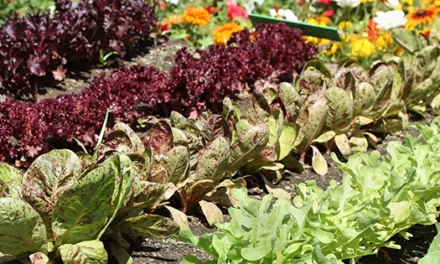
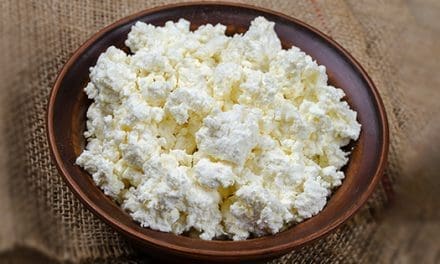







I would never recommend growing an invasive tree, especially Tree of Heaven or Paradise Tree.
If you want to forage from one I’m sure there’s one growing near by because they’re sprouting up everywhere, between houses, along abandoned lots, etc. etc.
Thanks for your input! I completely agree that Tree of Heaven can be invasive and isn’t really ideal for planting directly in the ground. That’s why I specifically mentioned growing them in containers to help control their spread. And yes, you’re right – if you want to forage, they’re often easy to find growing wild nearby.
However, so long as it’s managed carefully, like in a container with regular pruning, it can be turned into a useful tool rather than a problem. Appreciate you bringing up the importance of responsible growing!